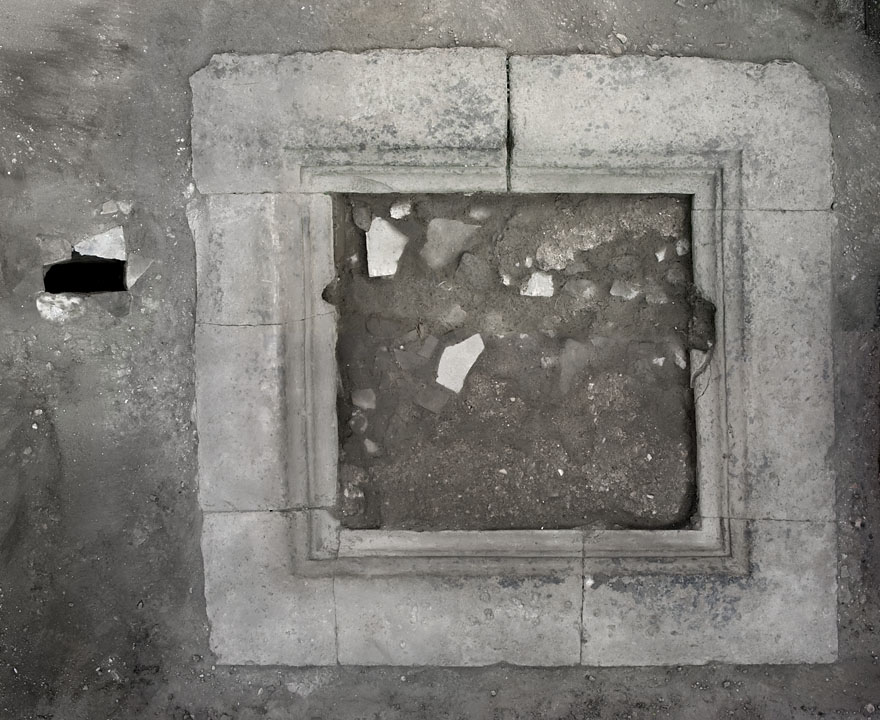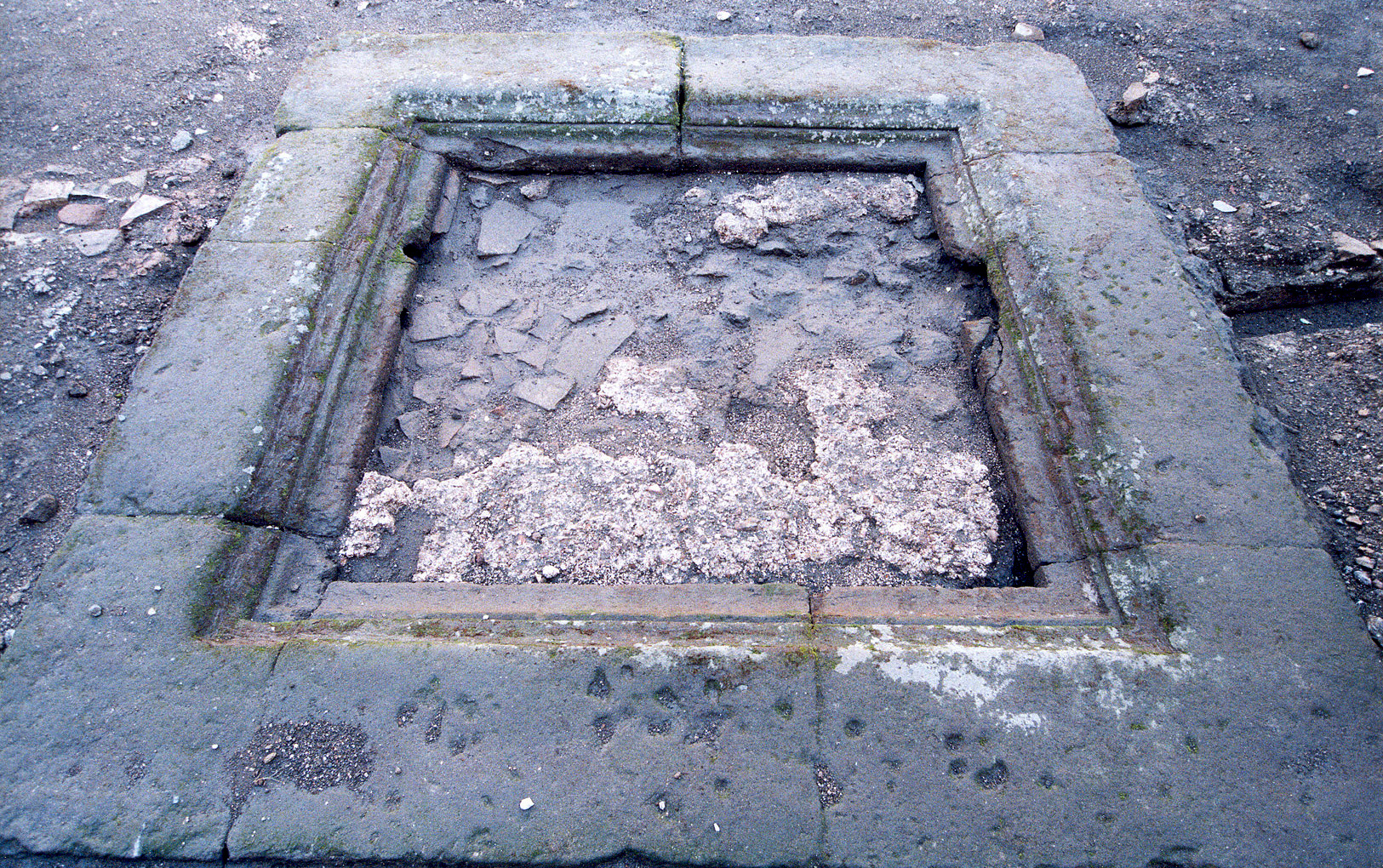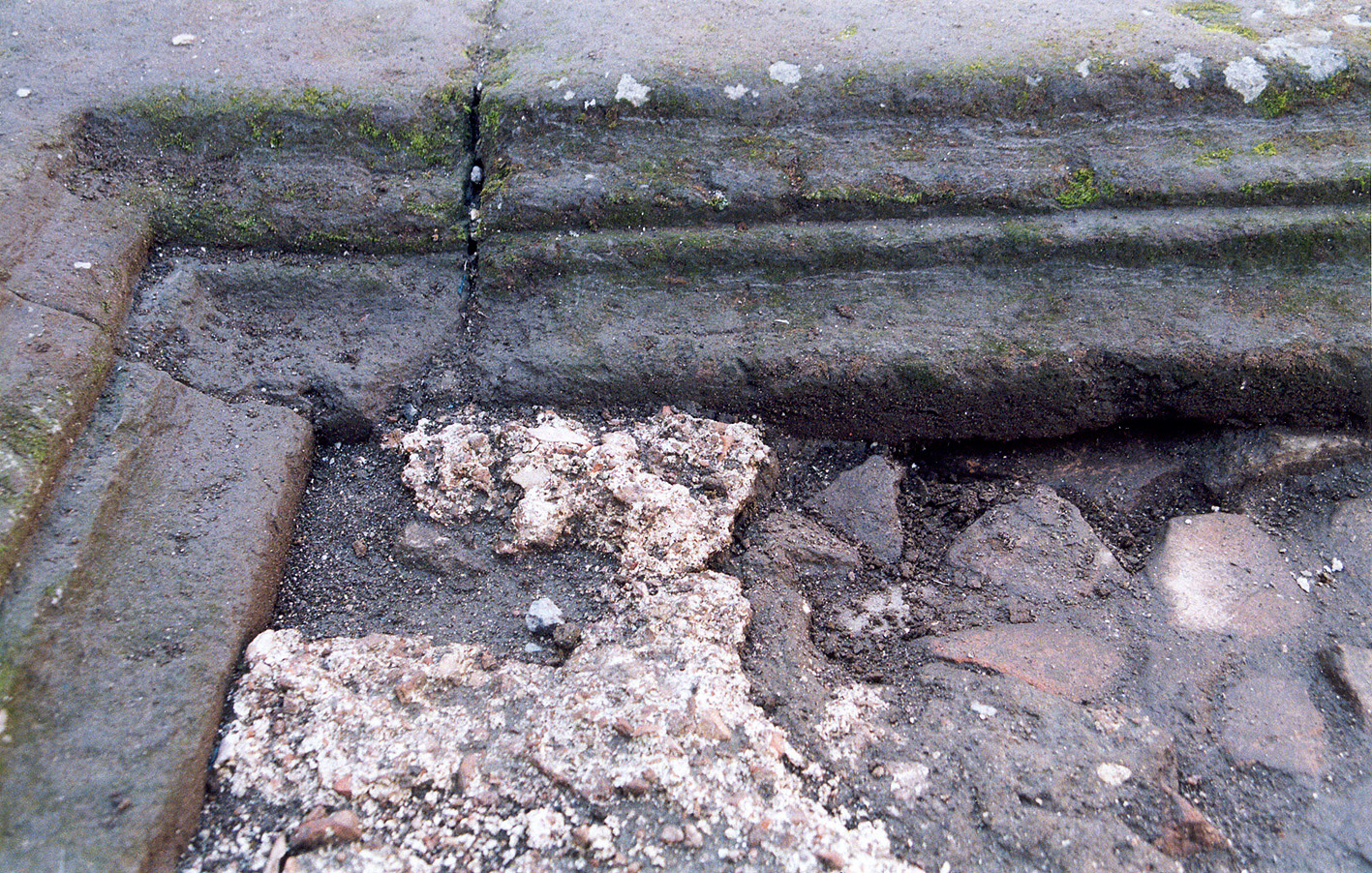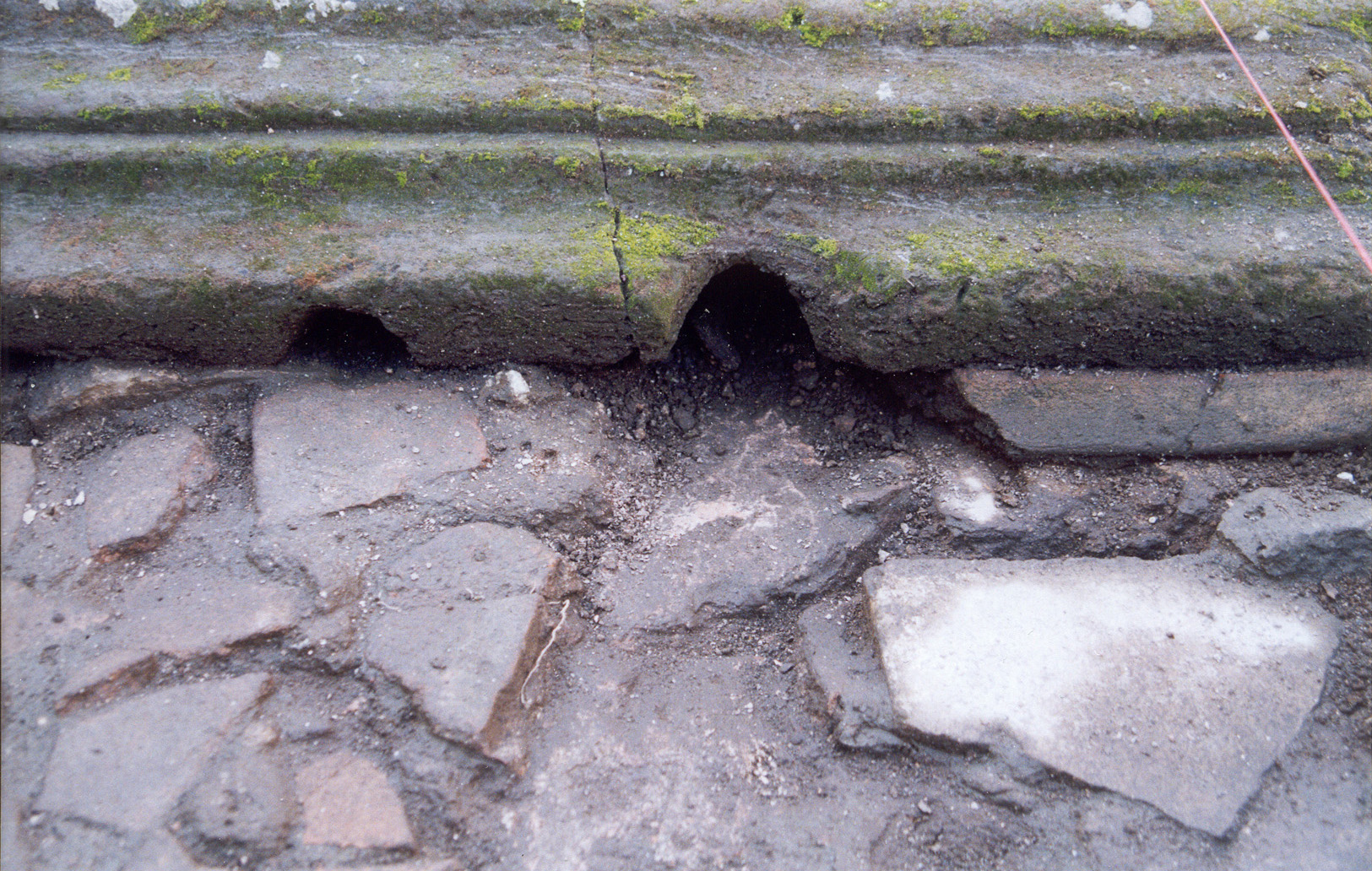Impluvium
Description
Henrik Boman & Monika Nilsson
The frame of the impluvium, dated to the 2nd century BC (type B, according to Fadda 1976) is made of eight tufa blocks. The cocciopesto paving of its interior was first thought to be related to the bakery rearrangements in the house, but in the light of our investigations, the floor is now held to be contemporary with the installation of the impluvium.
The cocciopesto is in a bad state of preservation, but best preserved in the S and N parts (see photo). The cocciopesto abuts to the stone frame, but the bedding of the floor extends under the stones and establishes the sequence of the construction.
A conduit runs through the impluvium, connected to the conduits coming from the tablinum and continuing through the fauces. The floor around the conduit in the impluvium is badly damaged, though some cocciopesto is preserved at what must have been the bottom of the conduit. The tile bedding and light mortar are on both sides of the conduit preserved to a higher level, indicating that the conduit most likely is an original feature of the impluvium floor. The conduit is c. 0.14m wide.
There are cuttings in the impluvium blocks for the inlets and outlets of the conduit; one larger on the east side, two smaller on the west side, of which one is connected to the conduit from the viridarium.
After the excavation in 2006 by the NW corner of the impluviumn, we could conclude that the impluvium was a late installation in the building now labelled V 1,14-16. Plaster fragments of identical type were found on the walls in the atrium and in the stone foundations of the impluvium, leading us to conclude that it was installed in a rebuilding phase of the house dated later than the 2nd century date of the impluvium molding.
The installation on the east side
Numerous small cuttings in the top surface of the impluvium stones are visible at the E and S sides. Cuttings are found on the east side, forming a rectangular area in the centre of the eastern stone line. These cuttings must have originated from the installation on the side of the impluvium, possibly a massive table or a water installation. Mau described an installation in yellow marble imitation on the north side of the impluvium. Assuming the cuttings are the remains of this installation, we probably misunderstand Mau´s ´north´ for our east (the actual city grid being somewhat askew to the four cardinal points).
The installation on the east side
Cuttings in the top surface of the impluvium stones are visible at the E and S sides. Cuttings are found on the east side, in a rectangular area across the middle stone. These cuttings must have originated from the installation on the side of the impluvium, possibly a massive table or a water installation.
The floor bedding
The tile/brick fragments used in the bedding for the floor continue under the impluvium stones. On the west side, a large tile fragment is visible in the cuttings for the conduit and it continues well under the stone. Tiles/brick are visible under the stones for c. 0.1m also on the north and east sides.
The cocciopesto layer seems to be in level with the last molding of the stones, most clearly visible on the south side.





